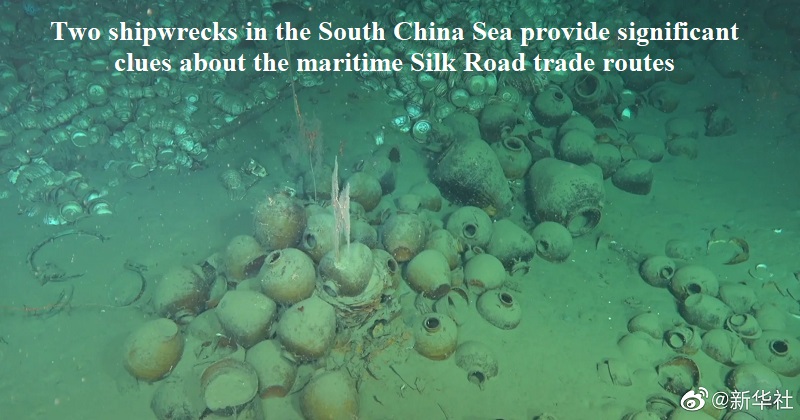
Chinese archaeologists have revealed that two shipwrecks discovered in the South China Sea, believed to be around 500 years old and containing stacked timber and Ming-era porcelain, provide valuable insights into the maritime Silk Road trade routes.
Officials announced that the shipwrecks were found in October and that cultural and archaeological authorities have now commenced a deep-sea exploration and excavation process, expected to last at least a year.
Marine researchers located the two vessels in the northwest region of the South China Sea, approximately 1,500 meters below sea level.
The officials described the shipwrecks as “relatively well preserved” and containing a large number of cultural relics.
According to experts, one of the wrecks belongs to the Hongzhi period of the Ming dynasty, which spanned from 1488 to 1505. This ship carried pottery and a cargo of stacked persimmon timber logs.
The other wreck is estimated to date back to the Zhengde period, from 1506 to 1521, and was filled with over 100,000 pieces of porcelain crockery. Photographs revealed piles of plates, stacked bowls, and intricately designed jars buried beneath sand and mud.
The archaeologists noted that the ancient ships were traveling in different directions and were discovered within 20 kilometers (12 miles) of each other. This unique proximity suggests that they were navigating an important trade route.
Tang Wei, the director of the Chinese National Centre for Archaeology, stated, “It helps us study the maritime Silk Road’s reciprocal flow.”
While the exact location of the shipwrecks remains undisclosed, markers have been established on the site, according to officials.
In recent years, Chinese archaeological exploration has ventured into deeper waters following the establishment of a deep-water archaeology laboratory by the National Centre for Archaeology and the Institute of Deep-Sea Science and Engineering in 2018.
Using the submersible Shenhai Yongshi, or Deep Sea Warrior, which can reach depths of 5,000 meters, researchers embarked on underwater exploration on Saturday.
The research program has been divided into three phases, with 50 dives planned between now and April.
“We first need to assess the condition of the shipwrecks, and then we can develop plans for archaeological excavation and preservation,” said Song Jianzhong, a researcher at the National Centre for Archaeology.

Post Your Comments